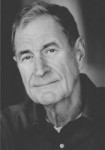 Ray Dolby, on September 12, 2013 in San Francisco of acute leukemia, although his recent years were clouded by Alzheimer's disease. He was 80 years old. Ray was an engineer, businessman, inventor of the Dolby noise reduction system, and founder of Dolby Laboratories.
Ray Dolby, on September 12, 2013 in San Francisco of acute leukemia, although his recent years were clouded by Alzheimer's disease. He was 80 years old. Ray was an engineer, businessman, inventor of the Dolby noise reduction system, and founder of Dolby Laboratories.
Ray Dolby was born in Portland, Oregon in 1933 and raised on the San Francisco Peninsula. As a high school student, he started working for Ampex Corporation in Redwood City. While at Ampex, he was the chief designer of all electronic aspects of the first Video Tape Recorder, released in 1956.
In 1957, he received his B.S. in electrical engineering from Stanford University. He won a Marshall Scholarship, becoming a graduate student in physics at the Cavendish Laboratory at Cambridge University, where he earned his Ph.D. in 1961 on the subject of long wavelength X-ray microanalysis. He was the first American Fellow at Pembroke College. While in Europe, he enthusiastically embraced its culture and explored the continent on many trips, including climbing the Matterhorn and traveling by motorcycle.
From 1963 to 1965, he held a UNESCO (United Nations Educational Scientific and Cultural Organization) appointment as Technical Advisor to the Indian Government, where he taught the fledgling Indian scientific instruments industry to design better equipment.
Interested since his teenage years in improving audio and music recordings, he began his work on creating a system of reducing noise on magnetic audio tape recordings. In 1965, he returned to England to establish Dolby Laboratories, Inc. in London. His unique method, the Dolby System, was first used in professional audio recording in 1966.
Thanks to his pioneering work, the Dolby System became an integral part of consumer tape recording equipment, and propelled the audio cassette to a high-fidelity medium. In the early 1970s, the Dolby System was introduced to the optical analog audio track of film, where it became an industry standard. Building upon this, the company continued to improve its cinema and home theater technologies with Dolby Stereo and Dolby Surround, among many other products.
The company was held privately until 2005, when it went public on the New York Stock Exchange.
Ray was issued numerous patents for his work. He also published many scientific papers for the Audio Engineering Society and the Society of Motion Picture and Television Engineers.
Among his many honors and awards were the National Medal of Technology from President Clinton in 1997, and the Order of Officer of the British Empire (O.B.E.) from H.M. Queen Elizabeth II in 1987. He was awarded the Oscar from the Academy of Motion Picture Arts and Sciences in 1989, Emmys from the National Academy of Television Arts and Sciences in 1989 and 2005, and a Grammy from the National Academy of Recording Arts and Sciences in 1995. He was inducted into the National Inventors Hall of Fame in the U.S. and the Royal Academy of Engineers in the U.K. in 2004. He also received multiple awards and medals from professional and trade organizations in the audio and film industries, including the Berlinale Kamera Award in 2012 and the George Gund III Award from the San Francisco Film Society in 2013.
In 2012, the official home of the Academy Awards in Hollywood was re-named the Dolby Theatre. A ballroom where the annual Academy Governors Ball is held became the Ray Dolby Ballroom.
Ray was always interested in technical and mechanical endeavors. Motorcycles, cars, boats, buses, and airplanes all held his interest for many years. In 1989, he custom designed a 40-foot bus in order to take his family on trips around the national parks. A ye later, he became a pilot, eventually flying a Cessna Citation CJ2 jet and a turbine helicopter that he liked to land on the lawn of his Lake Tahoe home.
Ray was an avid traveler around the world. When he completed his job in India in 1965, he and Dagmartraveled back to Europe overland in a VW bug. He also prided himself to have landed his plane in almost all 50 states and 30 countries, as well as crossing the Atlantic seventeen times single-handedly.
In the field of philanthropy, Ray and Dagmar supported stem cell research by helping to fund a building at the University of California San Francisco. They also supported the new Brain Health Center at California Pacific Medical Center. Ray was a longstanding member of the board of the San Francisco Opera and the San Francisco Symphony.
He was also a member of the Pacific Union Club and St. Francis Yacht Club.
He is survived by Dagmar, his wife of 47 years, his sons, Tom and David, their spouses, Andrew and Natasha, his four grandchildren, and one brother, Dale.
Donations may be made in Ray Dolby's memory to the Alzheimer's Association , 1060 La Avenida Street, Mountain View, CA 94043 or to the Brain Health Center, c/o CPMC Foundation, 45 Castro Street, San Francisco, CA 94117.

